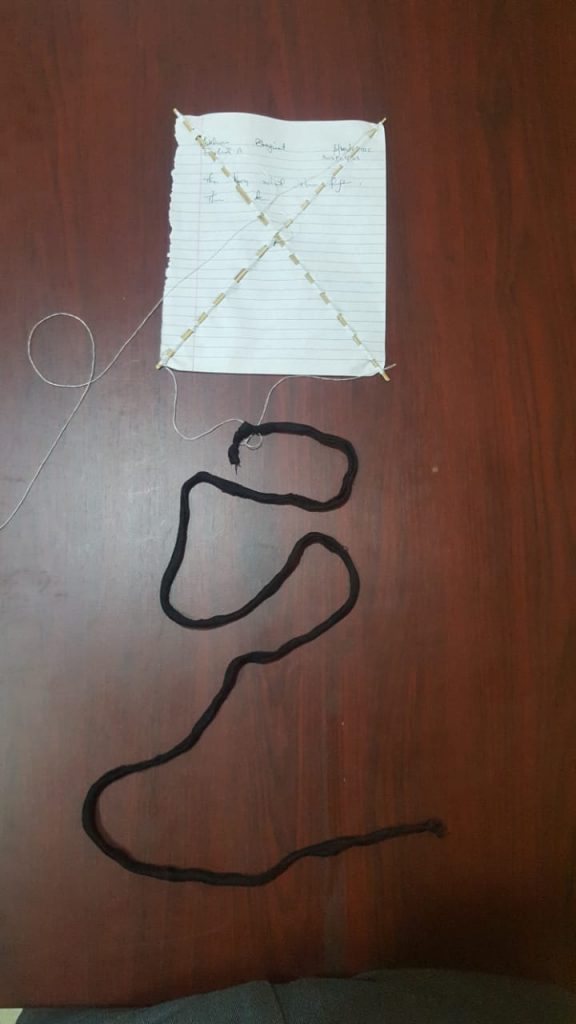 By Lakhram Bhagirat
By Lakhram Bhagirat
The memories of me ripping the pages out of my old exercise books are so fresh that it feels as though it was just yesterday. Although it was over a decade ago, I still remember secretly stealing ‘pointers’ from my grandmother’s broom along with her spools of thread. And oh boy, do I remember the thrashing I received for shredding the bedsheet to make a tail for my kite.
You see, there was always this competition among us to prove who the ‘baddest’ kite maker was. I had a legacy left behind by my father that I needed to keep up despite no one expecting me to. My father was perhaps the best kite maker in our village since many of the residents would come to Uncle Michael’s house for him to frame a kite or help them uniquely paste it.
Every kite my father made would soar to unimaginable heights and remain there for most of the day and well into the night. There are even stories of the kites he made being airborne for days and many knew those stories.
The elaborate kites were never my thing as I am more on the simplistic side of things. It means that the intricate kites created by my father did not appeal to me.
I thoroughly enjoyed the days of my Easter vacation running in the sugarcane fields of my neighbour, getting covered in soot but having a ball of a time running behind our good old caddy. The caddy ole punch one of the kites that have sentimental value to a lot of Guyanese.
It was the first kite I learnt to make because it was the most simple and required the least effort. I would sneak into the house while mommy was away at work and rip a page or two from the old exercise books, then rush to my grandmother’s house and ‘borrow’ a spool of thread to fly this kite.
Armed with my pages, two pieces of ‘pointer’ and my threat, then the creation of a masterpiece begins. The process is quite simple since all it involves is the marking of an X to cover the paper and using the ‘pointer’ to thread along the line and voila you have a kite.
The trick, however, is not in how you make the kite rather it all rests in the loop. Any veteran kite maker would tell you that no matter how pretty your kite looks if the loop ain’t proper then you might as well just retire that thing as a showpiece.
The art of loop making is not something one can get in a jiffy rather it requires expert skills and patience. It takes many trials and errors before once can conquer the art and make a loop that would ensure your caddy soared to unprecedented heights and stay there all night.
However, not only is the perfect loop required to ensure a successful caddy rather the secret of your success lies in the tail. The tail which is the star of the show should be as graceful as a ballerina’s attitude. It should be flowing like the when Eminem spits verses. In other words, it must be a talented tail and preferably cotton or polyester.
Though the caddy ole punch is an iconic part of Easter celebrations, the tradition of making them is dying and rapidly so. The generation now, despite knowing of the famous kite, seems disinterested in part taking in its creation. 
Overall, as time progresses the younger generation is moving away from the actual flying of the kite to the more ornamental aspects of Easter Monday celebrations and that is the decking out in extravagant clothing and hanging with friends taking unlimited selfies.
Although Easter is about the sacrifices of Jesus Christ, the kite flying is somewhat cultural since it has no significance to Christianity. Rather kite flying is an ancient past time of the Chinese people and is believed to be incorporated in the Caribbean culture because of their arrival to this part of the world.
The caddy ole punch is a symbolism of a time when simplicity mattered. The caddy came about, according to many, as a substitute to parents being unable to afford the more extravagant kites during a time when resources were scarce to come by. However, it has now become a part of the fabric of our society and those who grew up in that era reminisce on the fun they had running through the fields raising their kites.











